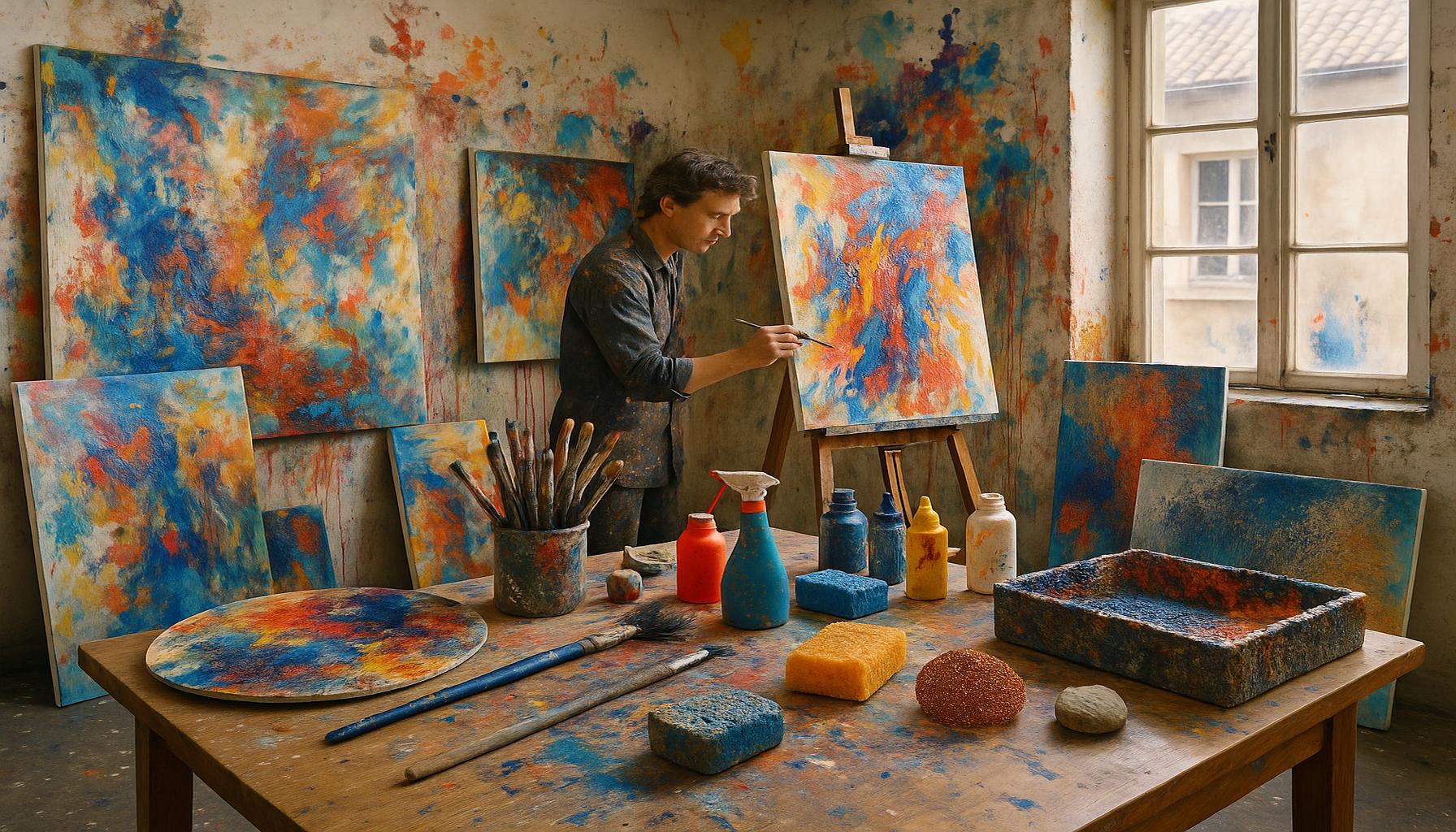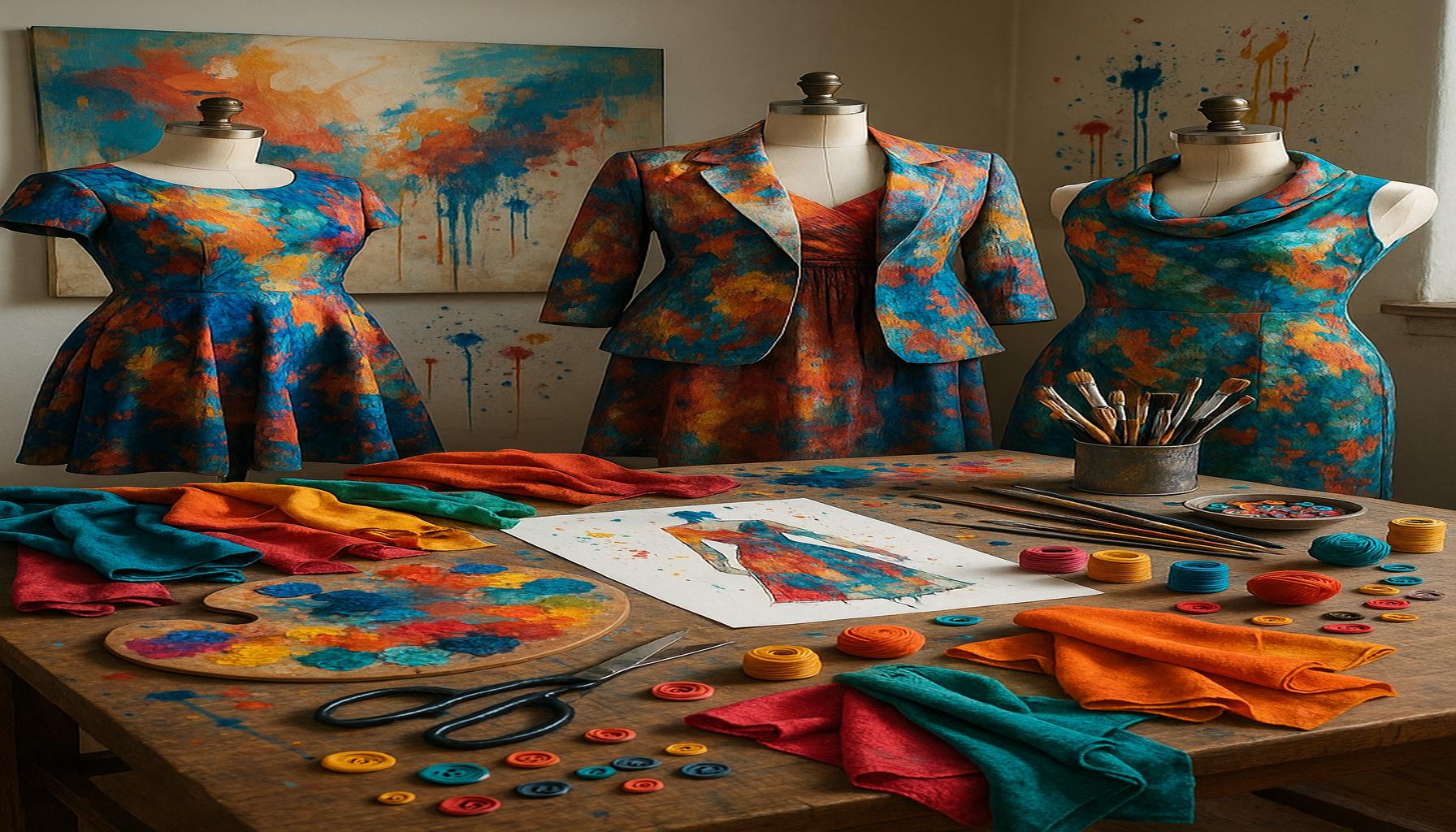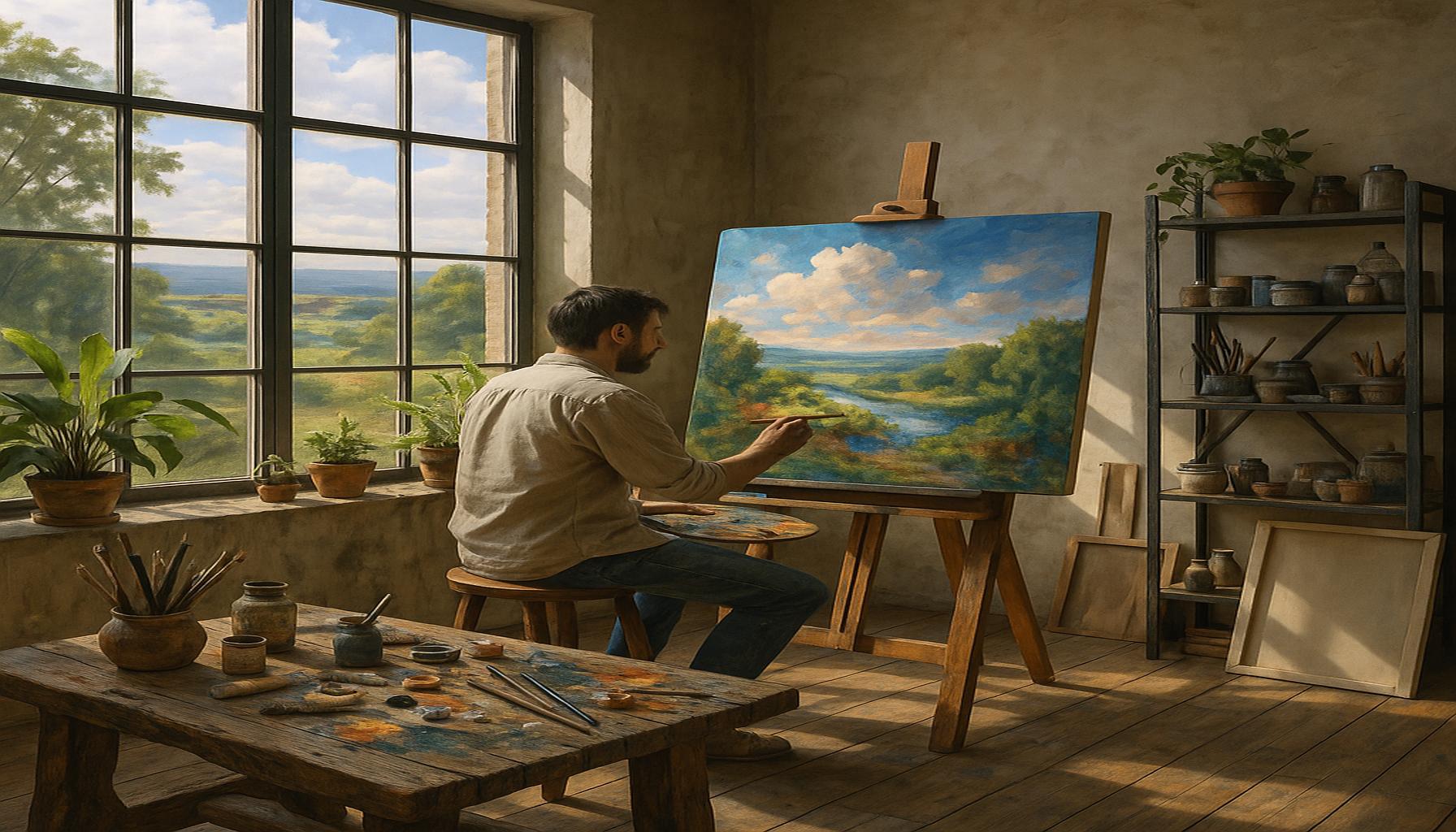The Creation of Collaborative Art: Artistic Hobbies that Unite Communities through Creativity
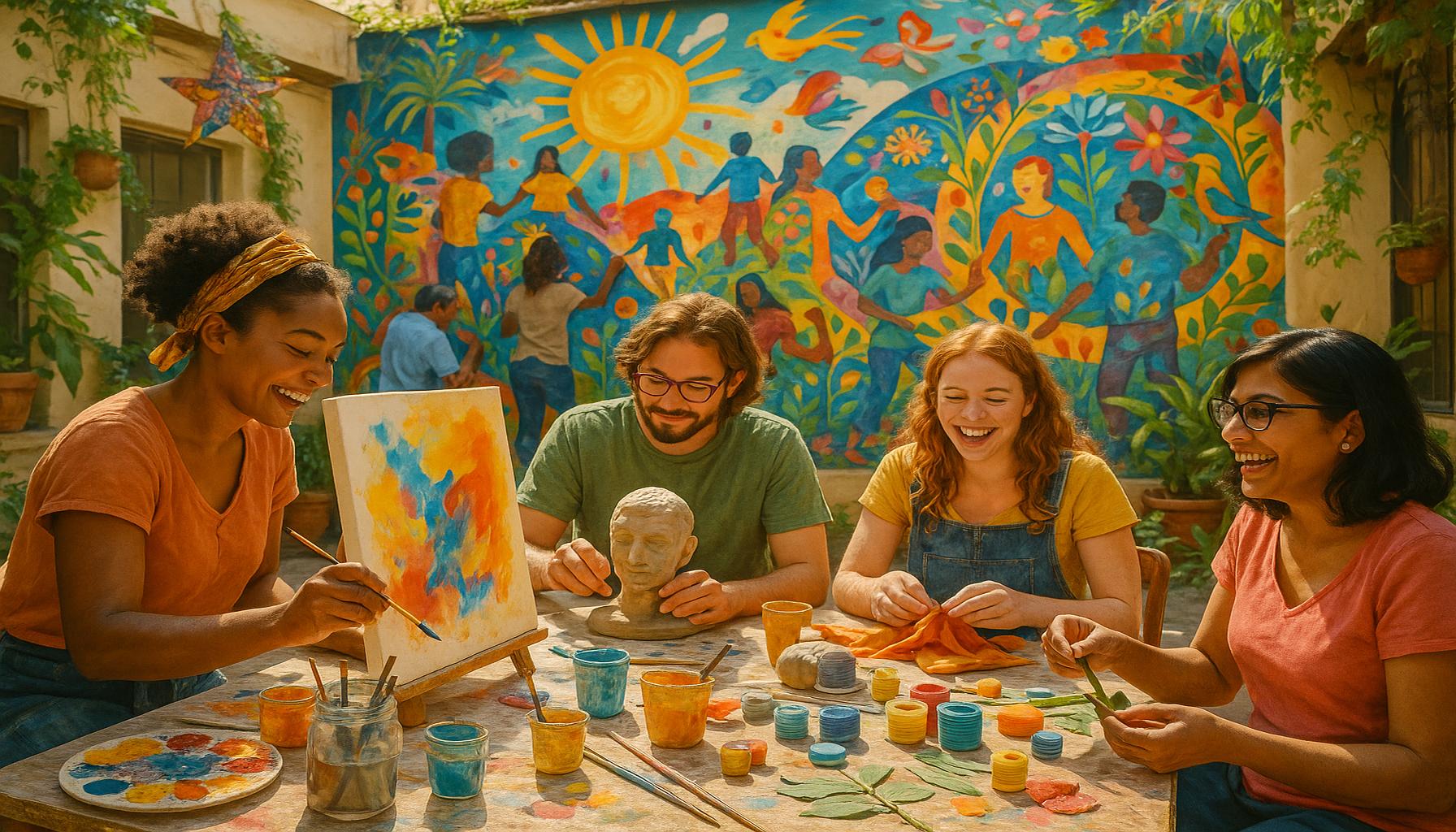
The Power of Creative Collaboration
Art serves as a powerful medium for connection, effectively bridging the gaps between diverse individuals in a shared pursuit of creative expression. When individuals come together for collaborative art projects, they not only explore their individual creativity but also build meaningful relationships with one another. This unique intersection of artistic expression and teamwork is reshaping our understanding of both hobbies and interpersonal connections in today’s increasingly fragmented social landscape.
Why Collaborative Art Matters
Engaging in artistic activities yields a plethora of benefits for communities, significantly impacting social dynamics and enhancing community well-being. Collaborative art projects provide frameworks for various groups to unite—the essence of participation can sometimes hold tremendous transformative power. For example:
- Encouraging Inclusivity: Collaborative art invites individuals from various backgrounds to participate, welcoming voices from different age groups, cultures, and social classes. Through projects like community murals or art festivals, all participants feel valued and included, catering to the principle that everyone has a story worth sharing.
- Fostering Communication: It opens channels for dialogue and expression among participants. Artistic activities such as storytelling through theater or collaborative exhibitions become platforms for understanding, often leading to deeper conversations about shared experiences and challenges within the community.
- Building Local Identity: Community art projects can reflect the culture and values of a neighborhood, creating a sense of pride and ownership. For instance, a local mural can illustrate historical events or significant figures relevant to a particular area, engaging residents and visitors alike.
From the vibrant colors of mural painting to the enchantment of community theater productions, artistic hobbies have evolved into valuable tools for unifying neighborhoods. By sharing ideas and skills, participants enhance their personal creativity while weaving a richer tapestry of communal life. As communities across the United States embrace these artistic endeavors—whether through public installations or interactive art workshops—the potential for connection and collaboration continues to grow exponentially.
Artistic Initiatives Across the Nation
Numerous initiatives exemplify how collaborative art projects can ignite community engagement in creative ways:
- Public Murals: In cities like Philadelphia and Chicago, local artists and residents have come together to create visually stunning murals that have transformed cityscapes into vibrant stories, bringing life to previously neglected spaces.
- Theater Groups: Community members collaborate on performances that tell their stories, such as the New York Theatre Workshop’s commitment to showcasing local narratives through performance art, fostering deeper connections within diverse audiences.
- Art Workshops: These gatherings allow people to learn and create together, such as those offered by community centers nationwide, where individuals of all ages can engage in pottery, painting, and fabric arts, enhancing skills while making new friends.
As we delve deeper into the world of collaborative art, it becomes evident that the creative processes involved offer not only a vehicle for personal expression but also a profound impact on communities. Increasingly, people are discovering how artistic hobbies can unite and inspire individuals, fueling a passion for both creativity and community engagement. The dynamics of collaboration in art are paving the way for a future where connection thrives on the beauty of shared experiences.
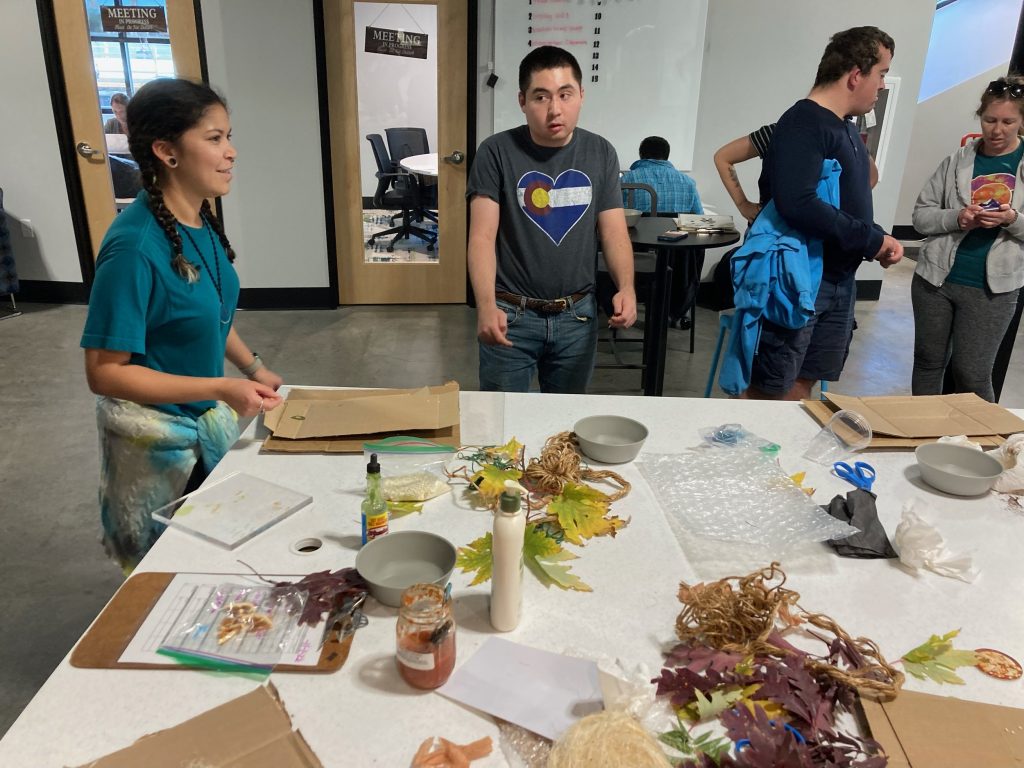
DIVE DEEPER: Click here to learn about the therapeutic benefits of crafting
Exploring the Spectrum of Collaborative Artistic Hobbies
The world of collaborative art is expansive, encompassing a variety of forms that invite participation and creativity from individuals across communities. Whether it’s through visual art projects, performances, or interactive workshops, opportunities abound to engage creatively with fellow community members. This section delves into specific artistic hobbies that demonstrate how collaboration can enrich both the creative process and community ties.
Visual Art Collaborations
One of the most prominent forms of collaborative art is mural painting. Murals have the unique ability to reflect a community’s essence, often depicting themes relevant to local history or culture. Cities like San Francisco have become canvas hotspots, where artists work alongside community members to create expansive murals that tell their stories. Workshops that focus on mural techniques not only teach skills but also foster relationships, breaking down barriers and allowing participants to express their shared experiences.
Another rising trend is community art installations. These projects often invite local residents to contribute their artistic flair to a single piece, creating a patchwork of individual expressions that collectively represent the community’s identity. For instance, a neighborhood park in Austin, Texas, saw the transformation of a weathered playground into a colorful mosaic led by local artists. Such collaborative efforts provide a powerful outlet for community voices, inviting personal stories and reflection into public spaces.
Performance Arts and Community Theater
Theater serves as another compelling medium for collaboration, allowing diverse voices to share their narratives. Many communities have embraced the concept of community theater, where residents can express their creativity through acting, writing, and directing. Programs like those run by the Oregon Shakespeare Festival emphasize inclusivity, offering workshops and open auditions, ensuring everyone from beginners to seasoned performers can contribute their talents. These productions often highlight local stories, enhancing community bonds while providing entertainment and education.
Interactive Art Workshops
Art workshops offer yet another avenue for creative collaboration. Many community centers throughout the United States host events that bring people together to learn various artistic skills—from painting to pottery. These workshops not only enhance individual creativity but also pave the way for relationship-building among participants. For example, a weekend pottery class in Baltimore might see participants of all backgrounds coming together, sharing techniques and laughter while molding their artistic visions into tangible forms.
Through these artistic recreational activities, individuals not only discover their creative potential but also forge connections with one another, cultivating a sense of community that goes beyond the canvas or stage. The vibrancy of collaborative art can profoundly shape the social landscape, drawing attention to the importance of engagement in artistic hobbies as a means to unite communities through creativity.
| Advantages | Impact on Community |
|---|---|
| Fosters Creativity | Collaborative art projects stimulate innovative ideas and unique expressions among participants, enhancing community creativity. |
| Builds Connections | Participants engage with diverse backgrounds, establishing lasting relationships and a sense of belonging that bridges generational and cultural gaps. |
| Promotes Inclusivity | Encouraging all voices to be heard, collaborative art ensures that various perspectives are valued and represented, strengthening community unity. |
| Enhances Well-being | Engaging in artistic hobbies has been shown to improve mental health, reducing stress, and fostering a more vibrant and supportive community atmosphere. |
Artistic hobbies that invite community participation, such as mural painting or communal sculpture projects, spark an energizing dynamic that resonates beyond the canvas. These projects create platforms for dialogue and expression, amplifying voices that might otherwise go unheard. Moreover, actively investing time in creative endeavors enables individuals to express their identity and experiences, enriching the shared narrative of the community.Research indicates that collaborative efforts in art can lead to a decrease in social isolation and an increase in participation in local activities. When communities come together to create, not only do individual skill sets shine, but collective strengths become evident, encouraging a spirit of cooperation and a shared sense of accomplishment. The transformative power of collaborative art highlights a profound relationship between creativity and community building, positioning artistic hobbies as a vital resource for social cohesion. By cultivating places where creativity can thrive, communities manifest spaces of interaction and understanding that ultimately benefit everyone involved.
DIVE DEEPER: Click here to discover the benefits of music for your mental health
Cultivating Connections through Collaborative Crafting
Beyond traditional forms of art, there exists a vibrant realm of crafting activities that unite community members in creative pursuits. Crafting not only provides a platform for artistic self-expression but also encourages collaboration among participants, transcending age, skill level, and cultural backgrounds. From knitting circles to community quilting projects, these artistic hobbies foster social interaction and nurture a sense of belonging.
Textile Arts and Quilting Bees
Community quilting bees are an excellent example of how textile arts can create bonds among participants. In small towns and urban neighborhoods alike, quilting groups gather to share their skills and stories, often contributing to a larger community quilt that tells a collective narrative. For example, the Human Rights Quilt project invites various artists to contribute blocks that convey personal struggles or triumphs, ultimately stitching together a larger story about resilience across communities. These projects not only preserve cultural heritage but also instill pride and unity among those involved.
Moreover, events like “knit-ins” where crafters meet in public spaces to share techniques and create warm clothing for those in need, emphasize collaboration. Initiatives such as “Knit the Bridge”, an art installation project in Pittsburgh that involved hundreds of knitters, transformed a bridge into a tapestry of yarn, showcasing how communal crafting can beautify public spaces and draw attention to social causes.
Collaborative Writing and Storytelling
Storytelling, whether through spoken word or written narratives, serves as a creative avenue for community collaboration. Local workshops encourage participants to share their experiences through writing, culminating in anthologies that compile diverse voices. Many programs, such as Annenberg Foundation’s storytelling labs, have found success in bringing together individuals from various backgrounds to co-create narratives that illuminate shared human experiences, enhancing empathy and understanding.
These initiatives often extend into the realm of digital storytelling, where technology provides new platforms to document and share community stories. Projects like The Moth, which hosts live storytelling events, empower community members to present their tales in front of audiences. The shared experience of articulating personal stories fosters connection and can lead to a deeper community bond as individuals realize the common threads that weave through their lives.
Digital Innovations and Virtual Collaborations
In an increasingly digitized world, collaborative art forms have expanded into the virtual realm, offering new opportunities for artistic hobbies to unite communities. Platforms like Instagram and YouTube allow artists to collaborate globally, creating virtual murals or music projects that draw participants from around the world. Initiatives such as the Global Art Project invite artists from different countries to contribute to a shared online exhibition, promoting cross-cultural exchanges and exposing audiences to diverse artistic visions.
Furthermore, contemporary artists have begun to experiment with augmented reality (AR) and virtual reality (VR) technologies to create immersive experiences that encourage collaboration. Events like the Virtual Reality Art Show bring together artists from communities divided by physical distance, collaborating in real-time to produce unique interactive installations. These technological innovations challenge traditional notions of art and encourage inclusivity in the artistic process.
Through crafting, writing, and digital innovations, collaborative art not only serves as a vehicle for personal expression but also strengthens community ties, forging connections that can lead to lasting change. By embracing these artistic hobbies, communities can harness creativity to address shared challenges, celebrate diversity, and cultivate a spirit of unity. As individuals come together to create, they foster a sense of belonging and pride in their collective identity, demonstrating the undeniable power of collaborative art.
DIVE DEEPER: Click here to discover more
Embracing Creative Unity: The Impact of Collaborative Art
In conclusion, the realm of collaborative art offers profound insights into the power of creativity as a unifying force within communities. From crafting and storytelling to innovative virtual collaborations, these artistic hobbies create pathways for individuals to connect across diverse backgrounds and experiences. The tangible and intangible results of these collaborations—community quilts, shared narratives, and virtual art projects—serve not only as expressions of personal creativity but also as symbols of collective identity and resilience.
As communities increasingly grapple with social challenges, leveraging the unifying influence of art becomes exceptionally vital. Whether through local gatherings or global interactions facilitated by technology, collaborative art cultivates a sense of belonging, enhances empathy, and fosters dialogue among participants. The impact of such initiatives can often extend beyond the individual, inspiring broader social movements and revitalizing local spirit.
Moreover, as we continue to navigate a rapidly changing cultural landscape, the integration of digital platforms presents new opportunities for collaboration. As seen in projects like the Global Art Project or community initiatives conducting virtual reality art shows, the potential for artistic hobbies to dismantle geographical barriers and foster cross-cultural exchanges is unparalleled.
Therefore, by embracing collaborative art, we not only enrich our individual lives but also fortify the connections that underpin our communities. In recognizing the value of creative unity, we can embark on a journey that celebrates our shared humanity and inspires future generations to participate in this vibrant tapestry of artistic expression.
